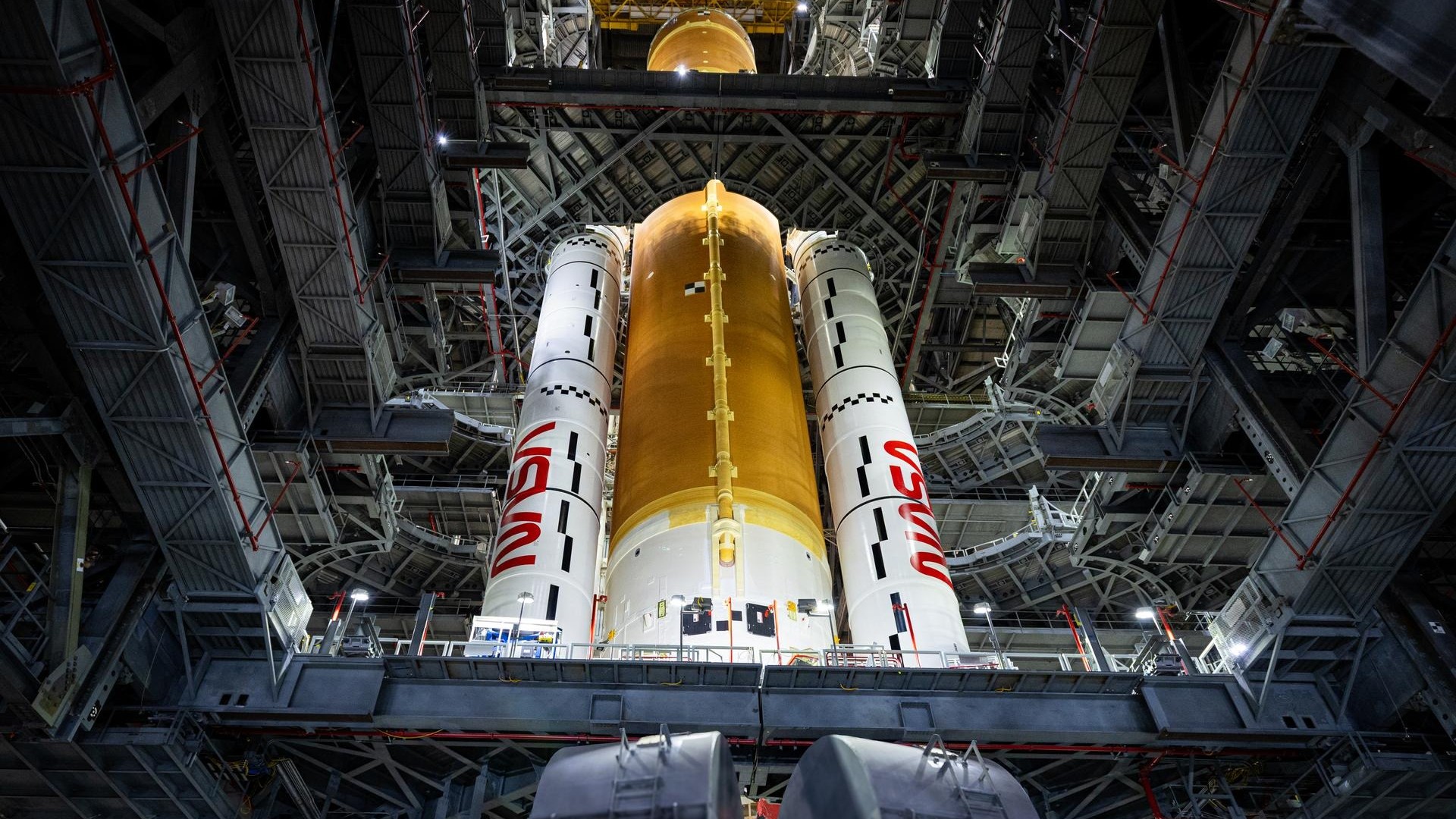NASA Memo: Shuttle Flight Delay to Fall 2006 Possible
NASA's nextspace shuttle flight may have to wait until fall 2006, as the agency grapples withthe effects of Hurricane Katrina and external tank concerns, according to aninternal memo by a top shuttle official.
Damagesustained to NASA's shuttle external tank factory, in New Orleans, and mainengine test site in Mississippi have left many employees homeless and left thefacilities inoperable. But the memo states that, even without the hurricane,meeting a March2006 launch target could have been a challenge.
"A bestcase estimate pre-hurricane...would have made the March launch date infeasible,May unlikely," according to the Sept. 1 memo written by Wayne Hale, NASA'sacting shuttle program manager, and obtained by SPACE.com.
Accordingto the memo, which was first reported by MSNBC.com, post-hurricaneestimates on shuttle external tank modification work to reduce the insulationfoam shedding like that seen in Discovery's July 26 launch - and that whichdoomed the space shuttle Columbia - are underway.
Haledescribed the assessment as "extremely preliminary," but concluded the memociting that "launch dates before fall of '06 may not be credible." A betterunderstanding of the external tank work and hurricane's impact will beavailable by next week.
"It ispre-decisional and is part of the ongoing assessment," NASA spokespersonKatherine Trinidad said of the memo.
Meanwhile,an update on Hurricane Katrina's impact to NASA facilities and the shuttleprogram will be presented during teleconference with reporters at 3:00 p.m. EDT(1900 GMT) today, she added.
Breaking space news, the latest updates on rocket launches, skywatching events and more!
NASA made reducingfoam debris shedding from external tanks at launch a priority after the 2003Columbia disaster, which led to the loss of one orbiter and the deaths of sevenastronauts. During launch, a piece of foam fell from Columbia's tank andpierced the orbiter's heat shield. The damage allowed hot gases to enter thewing during atmospheric reentry on Feb. 1, 2003 and rip the vehicle apart.
The spaceshuttle Discovery's STS-114 flight in July-August marked NASA's first orbiterlaunch since the Columbia accident. Despite more than two years of work,unacceptably large pieces of foam fell from Discovery's tank during launch -one large piece swinging past the orbiter's wing without hitting it.
Accordingto the memo, Hurricane Katrina damaged the roof of NASA's Michoud AssemblyFacility in New Orleans, where external tanks are built, and led to debrisdamage to one of the fuel tanks there. The only access to the facility is byhelicopter due to road and bridge damage, and at least 50 percent of thesurrounding homes are destroyed or suffered significant damage.

Tariq is the award-winning Editor-in-Chief of Space.com and joined the team in 2001. He covers human spaceflight, as well as skywatching and entertainment. He became Space.com's Editor-in-Chief in 2019. Before joining Space.com, Tariq was a staff reporter for The Los Angeles Times covering education and city beats in La Habra, Fullerton and Huntington Beach. He's a recipient of the 2022 Harry Kolcum Award for excellence in space reporting and the 2025 Space Pioneer Award from the National Space Society. He is an Eagle Scout and Space Camp alum with journalism degrees from the USC and NYU. You can find Tariq at Space.com and as the co-host to the This Week In Space podcast on the TWiT network. To see his latest project, you can follow Tariq on Twitter @tariqjmalik.
